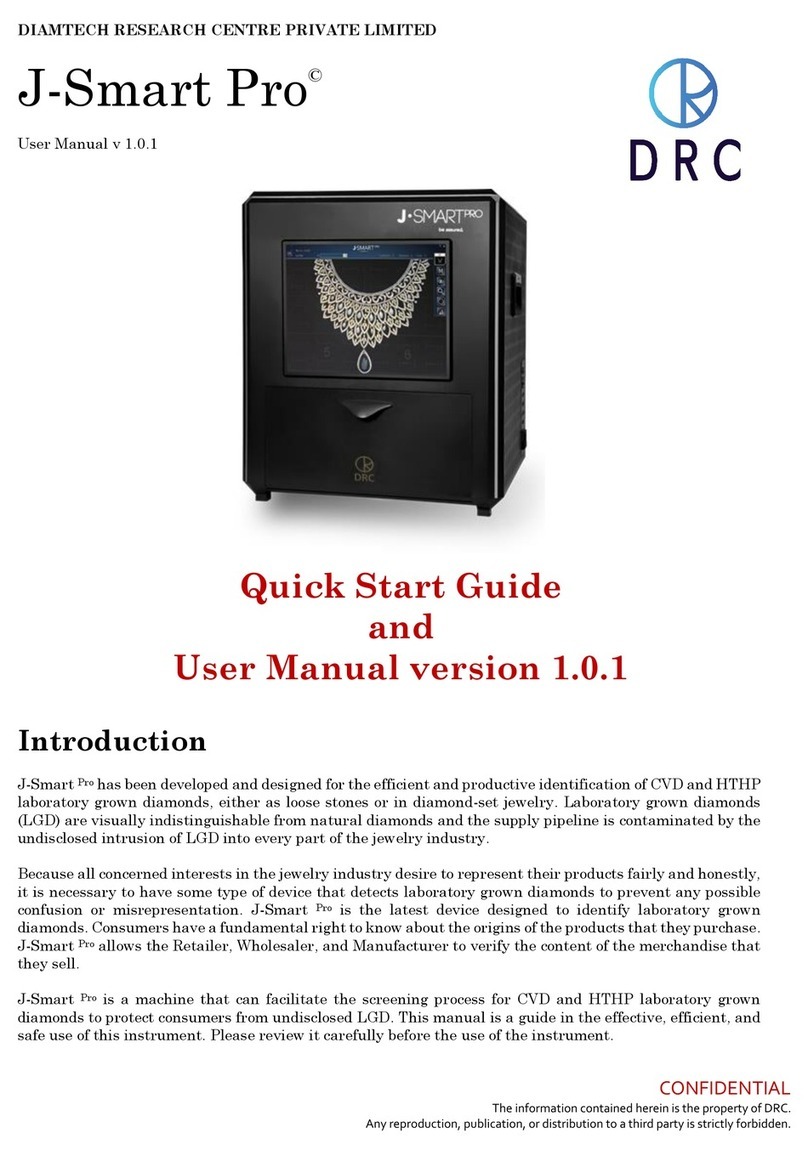
Version 5.01 – July 2012 / SW Version: 2012.06.12 D 1000 LF – Operation Manual
© DRC Srl 2012 7/102
4.5 BSCAN Menu.........................................................................................................38
4.5.1.1
GATE >--<.............................................................................................................................. 38
4.5.1.2
GATE --< ................................................................................................................................ 38
4.5.1.3
GATE ^................................................................................................................................... 38
4.5.1.4
TR MODE............................................................................................................................... 38
4.5.1.5
PROBE DELAY...................................................................................................................... 38
4.5.1.6
GAIN....................................................................................................................................... 39
4.5.1.7
BSCAN MAX .......................................................................................................................... 39
4.5.1.8
BSCAN MIN............................................................................................................................ 39
4.5.1.9
THICKNESS........................................................................................................................... 39
4.5.1.10
VELOCITY.............................................................................................................................. 39
4.5.2
BSCAN Modes ............................................................................................................... 40
4.5.3
THICKNESS – Thickness Measuring............................................................................. 41
4.5.3.1
Using GATE 1 only (GATE 2 OFF):........................................................................................ 41
4.5.3.2
Automatic thickness measuring mode with GATE 2 set to THICKNESS AUTO 1P-1P:......... 42
4.5.3.3
Thickness measuring mode with GATE 2 set to THICKNESS 1P-1P:.................................... 42
4.5.4
R-G-B Palette ................................................................................................................. 42
4.5.5
TOFD (BW) – Time Of Flight Diffraction ........................................................................ 43
4.5.5.1
Initializing TOFD Mode........................................................................................................... 43
4.5.5.2
Basic Settings For TOFD Technique...................................................................................... 43
4.5.6
BSCAN data records...................................................................................................... 45
4.6 SETTING Menu......................................................................................................46
4.6.1
GATE >--< ...................................................................................................................... 47
4.6.2
GATE --< ........................................................................................................................ 47
4.6.3
CURVED SURF.............................................................................................................. 47
4.6.4
DIAMETER..................................................................................................................... 47
4.6.5
PROBE DELAY.............................................................................................................. 47
4.6.6
GAIN............................................................................................................................... 48
4.6.7
ANGLE ........................................................................................................................... 48
4.6.8
X-VALUE ........................................................................................................................ 48
4.6.9
THICKNESS................................................................................................................... 48
4.6.10
VELOCITY...................................................................................................................... 48
4.7 DISPLAY Sub-Menu (SETTING) ............................................................................49
4.7.1
LANGUAGE.................................................................................................................... 49
4.7.2
UNITS............................................................................................................................. 49
4.7.3
FILL ................................................................................................................................ 50
4.7.4
GRID............................................................................................................................... 50
4.7.5
BSCAN MODE ............................................................................................................... 50
4.7.6
IRC ................................................................................................................................. 51
4.7.7
IRC RES......................................................................................................................... 51
4.7.8
IRC RATE....................................................................................................................... 51
4.7.9
PROBE BEAM................................................................................................................ 51
4.7.10
ENVELOPE .................................................................................................................... 51
4.8 CURVES Sub-Menu (SETTING).............................................................................52
4.8.1
DGS................................................................................................................................ 52
4.8.2
TCG................................................................................................................................ 52
4.8.3
REF TYPE...................................................................................................................... 52
4.8.4
REF SIZE ....................................................................................................................... 52
4.8.5
ERS DISP....................................................................................................................... 52
4.8.6
ATT COMP..................................................................................................................... 53
4.8.7
DAC INTERP.................................................................................................................. 53
4.8.8
DAC MODE .................................................................................................................... 53
4.8.9
AWS MODE.................................................................................................................... 53
4.8.10
API 5UE.......................................................................................................................... 53





























